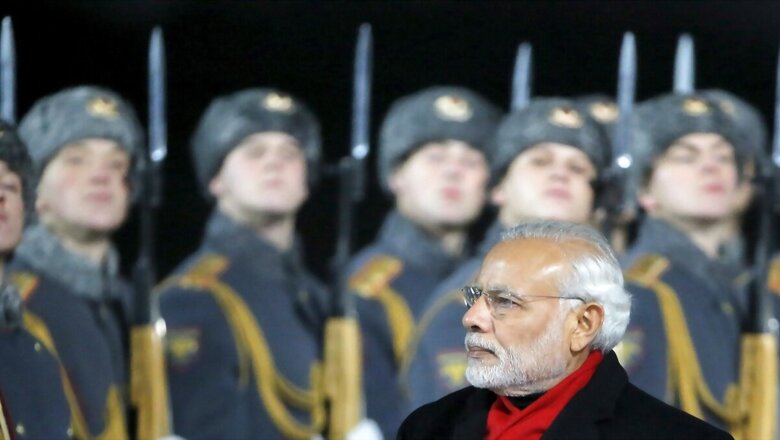
views
Prime Minister Narendra Modi’s visit to the Kremlin on July 8, 2024, marks a significant moment in India-Russia relations. This will be his first bilateral state visit to Russia since the war in Ukraine began, highlighting the enduring strength of the partnership despite global turmoil. It also makes Modi only the third Indian Prime Minister to visit Russia after winning elections, after Indira Gandhi in her second term and Rajiv Gandhi in 1984, underscoring the historical significance of this trip.
Post-Independence
India-Russia ties have grown ever since India gained independence. India, newly independent, sought to forge an independent path in the world, eschewing alignment with either the Soviet Union or United States of America. However, with the USA providing a supply of weapons to Pakistan at a time when India-Pakistan tensions were at an all time high, India turned to the Soviet Union for aid and support.
Throughout the 1950s, there was Soviet assistance and technology transfer in multiple industrial sectors such as steel, defence, railways, construction equipment, metal & mining, petrochemicals, among others to India.
The year 1955 was key for India-USSR relations, with then prime minister Jawaharlal Nehru visiting Moscow in June 1955 and Nikita Khrushchev conducting a reciprocal visit in November 1955. These two visits would set the pace of the relations for the next three decades.
The relations grew stronger especially during Bangladesh’s liberation when President Nixon and National security Adviser Henry Kissinger broke the American arms ban on Pakistan and ensured Islamabad received air support from third countries like Jordan much to India’s dismay and protests.
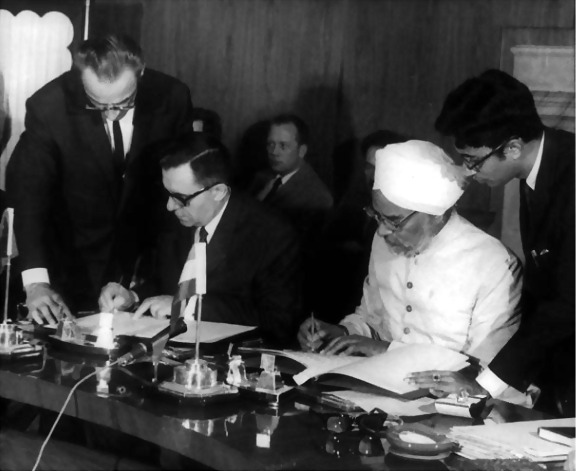
India signed the Treaty of Friendship with the Soviet Union in August 1971, in the midst of the war with Pakistan. However, despite popular belief it was not a treaty driven by the crisis. It was one of the most important landmarks for the Soviet Union and India. It crowned the principles and consistent policy of the two countries aimed at cooperation and friendship. The treaty was probably the most seminal foreign policy arrangement entered into by India in the 20th century. It undoubtedly had the most profound effect on the politics and geography of South Asia, cementing what many thought was the pre-eminence of India in the region.
However, the action taken by the Soviet Union to ensure no external superpower influence in the war is one that endeared it and its successor, Russia, in the hearts of many Indians. It is no secret that the US’ 7th fleet led by the aircraft carrier USS Enterprise, entered Bay of Bengal at the time. Its official purpose was to help provide safe passage to US citizens, but unofficially, it was here to stare down India into backing off from Bangladesh. A British naval group led by the aircraft carrier HMS Eagle with commando carrier HMS Albion, several destroyers and other ships was approaching India’s territorial waters from the west in an effort to provide support to the US.
In response, On December 13, 1971, Russia dispatched a nuclear-armed flotilla, the 10th Operative Battle Group (Pacific Fleet) from Vladivostok, under the Command of Admiral Vladimir Kruglyakov. Russia deployed two task groups; in total two cruisers, two destroyers, six submarines, and support vessels. A group of Il-38 ASW aircraft from Aden air base in Yemen provided support.
The strong relations with the Soviet Union continued and in 1985, then prime minister Rajiv Gandhi signed two long-term economic agreements with the Soviet Union. The Soviet Union played a crucial role in India’s economic development until 1991, becoming its largest foreign contributor. Their partnership, particularly in the 1960s, helped establish key heavy industries like power, coal, mining, steel, oil, and gas. From the Bhilai steel plant to ONGC and BHEL, Soviet expertise laid the foundation for some of India’s largest enterprises. By 1991, the Soviet Union had become India’s largest trading partner, with bilateral trade exceeding US$5 billion annually, a significant amount for that era.
End of the Cold War
In 1991, the Soviet Union collapsed which brought about significant challenges for a partner on which India had relied on so greatly since its Independence. USSR’s successor, the Russian Federation was in an economic turmoil and had to turn to the west for assistance, similar to what India did. As a result, the bilateral focus shifted to open new avenues for assistance.
India faced economic difficulties, particularly in securing energy imports and managing foreign exchange reserves. Russia’s economic instability also severely impacted India’s defence preparedness, disrupting the supply of spare parts and ammunition for Soviet-made military equipment.
These changes resulted in a shift in Moscow’s dealings with Pakistan, and under US pressure, Russia backed out of a deal to supply India with cryogenic engines for its space program. The combination of economic, defence, and political challenges significantly weakened India-Russia relations. While an extension on Treaty of Friendship and Cooperation was signed in 1993, its primary impact was to effectively nullify the security clause in the 1971 agreement, further indicating a weakening of the partnership.
However, all was not lost, as India’s actions in the post-Soviet era played a significant role in maintaining a positive relationship with Russia. Firstly, India’s decision to repay its full debt to the Soviet Union, despite the dramatic devaluation of the Ruble, demonstrated a strong commitment to the partnership. This act of goodwill was appreciated by Russian leadership and elites. Secondly, India’s prepayment for a Russian fighter jet order helped to stabilise the Russian defence industry, allowing them to retain valuable scientific and technical personnel.
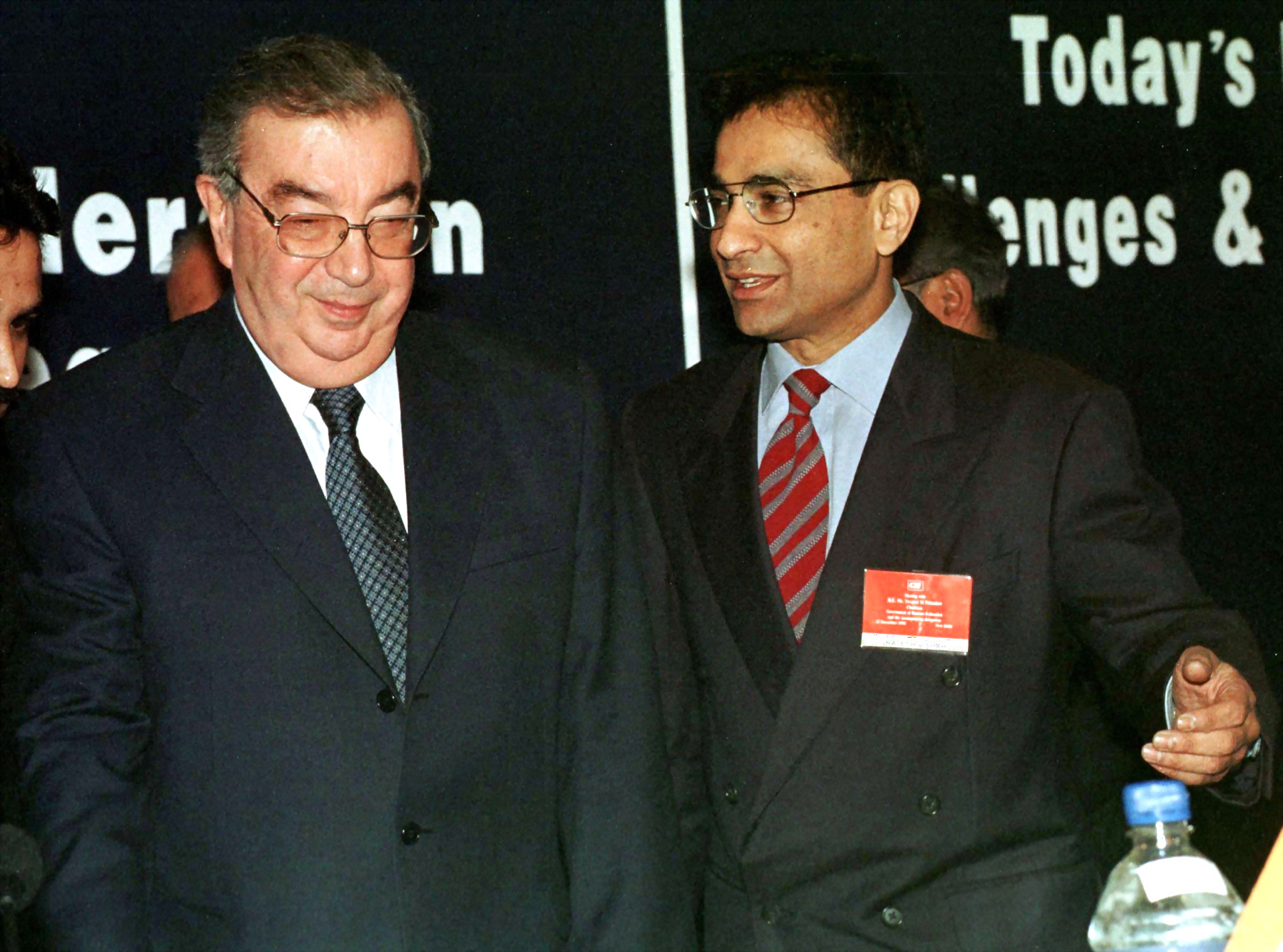
A turning point in Russia’s approach to India came under Foreign Minister Yevgeny Primakov in the late 1990s. Russia defied international pressure to sanction India after its 1998 nuclear tests, and despite US opposition, revived the agreement to build two nuclear power plants in Kudankulam.
Vladimir Putin’s rise to power in 2000 coincided with India’s adoption of a multi-aligned foreign policy, setting the stage for a new era of expanded relations. Putin declared India a key strategic partner, emphasising that Russia’s relationships with other countries would never be seen as a substitute for its strong bond with India.

While the period from the early 2000s to 2014 was characterised by strong political ties and frequent exchanges, this positive rapport did not fully translate into concrete long-term economic cooperation. Beyond traditional areas like military and energy, Russian and Indian businesses remained hesitant to take decisive steps towards each other, hindering the development of a more robust economic partnership.
Modi’s Russia Strategy
In the 2010s, India and Russia increasingly aligned their worldviews, with Indian leaders joining Russian calls for a multipolar world and expressing criticism of the US-led global order. Russia has also begun to see India not only as a counterweight to US influence but also as a way to balance its growing dependence on China. The 2021 Russian National Security Strategy underscored this shift by acknowledging both China and India as key partners.
The breakdown of the relationship between the US and Russia, was exacerbated by the Crimean crisis in 2014 and the 2022 Ukraine war, which has placed India in a challenging position. As the US and its allies have sought to isolate Russia, India has navigated a delicate path, refusing to participate in initiatives like expelling Russia from the G20 and resisting pressure to join sanctions, even amidst the threat of secondary sanctions under CAATSA.
The conflict in Ukraine has underscored the enduring strength of the India-Russia relationship. India’s declaration of neutrality, its abstention from UN resolutions condemning Russia, and its swift move to become a major importer of discounted Russian energy have demonstrably benefitted Russia. The conflict has deepened economic ties between the two nations, a development that has been elusive since the end of the Cold War.
This close alignment has even led to Indian officials expressing sympathy for Russia’s rationale behind the war. Despite immense pressure from the West to condemn Russia, India has successfully navigated this delicate situation, as evidenced by its successful hosting of the 2023 G20 Summit and its deepening involvement in the Quad. However, this balancing act puts India in a precarious position, facing intense pressure from its other strategic partners.
While India has maintained a close relationship with Russia, it has not shied away from expressing its commitment to peace. Prime Minister Modi’s declaration that “this is not the era of war” during his US visit in 2023 underscores this stance. Earlier, in one of Modi’s last meetings with Putin, bilateral talks on the margins of a summit of the Shanghai Cooperation Organisation in Uzbekistan in September 2022, he had famously pressed the Russian President to end conflict in Ukraine by saying “today’s era is not of war.”
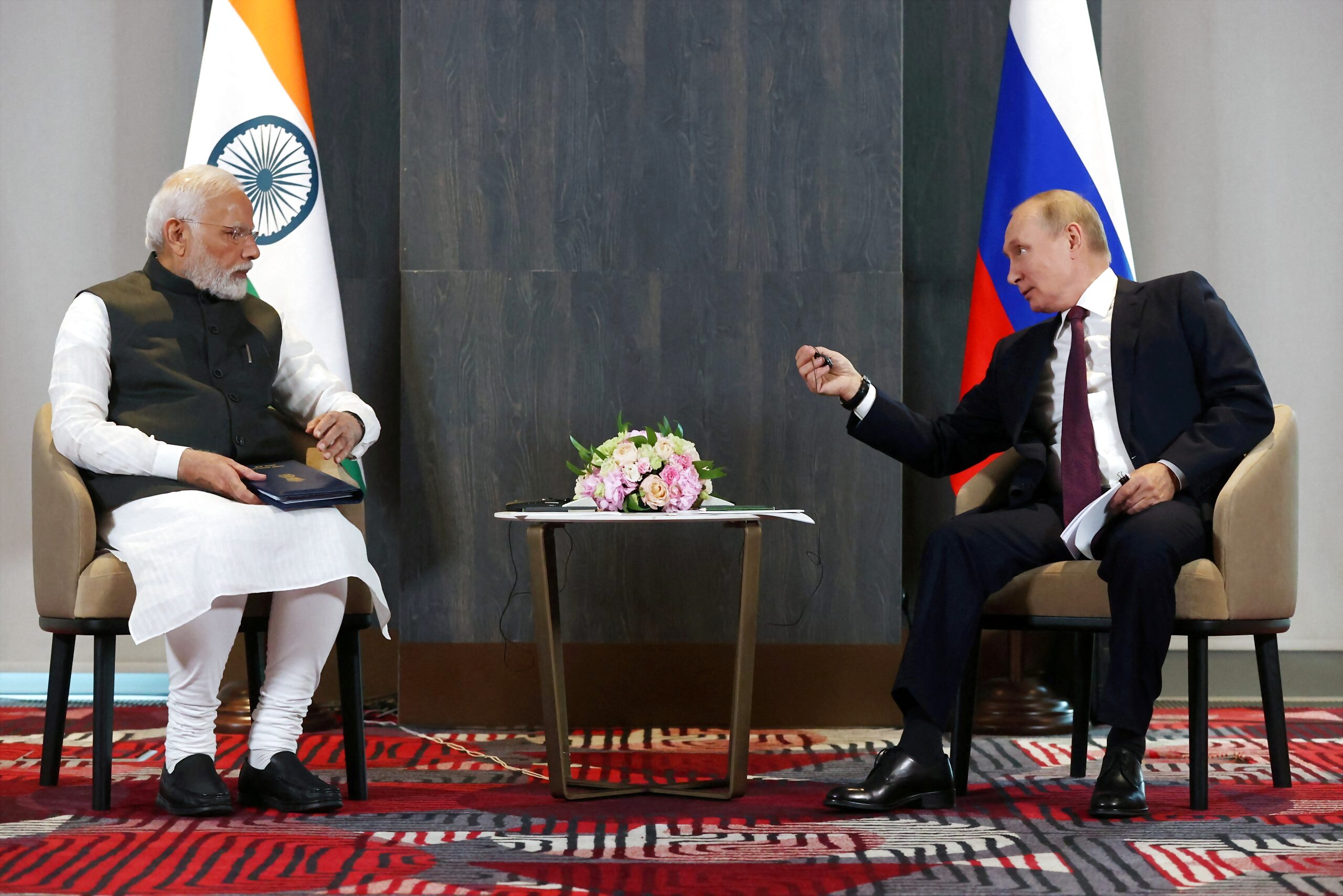
Moreover, in the last six months, India has dispatched 11 consignments of approximately 97.5 tonnes of humanitarian aid to Ukraine and neighbouring countries like Romania, Moldova, Slovakia and Poland. India’s commitment to foster peace has led to numerous phone calls with both Putin and Ukrainian President Zelenskyy.
The war has also resulted in a deepening of economic ties between the two nations. In 2019, both nations set their sights high, aiming to boost bilateral trade from US$10 billion to US$30 billion by 2025. This ambitious goal was not only met but surpassed in the 2022-23 financial year, with total legal trade skyrocketing to US$49 billion.
A key factor driving this surge was the sixfold increase in Russian oil imports, purchased at discounted rates. This energy trade now accounts for a significant portion of bilateral trade, representing 62.8 percent of the total and a substantial 19.2 percent of India’s overall oil imports. The discounted rates also helped India curb its energy inflation which occurred at the time when most countries are facing supply shortages.
Russia-India and The China Factor
The most pressing issue which concerns India since the breakout of the Ukraine conflict has been Russia’s growing closeness with China. The Russia-India ties most important foundation was laid in an attempt to keep China in check back in the 70s.
Contemporary western analysts often argue that a burgeoning China-Russia alliance will eventually derail the traditional Russia-India friendship and hurt India’s national interest, making it much more vulnerable to the China threat. However, one can argue that in the dynamics of this power relationship between the three states China has to accept the growth and solidity of the Russia-India relations.
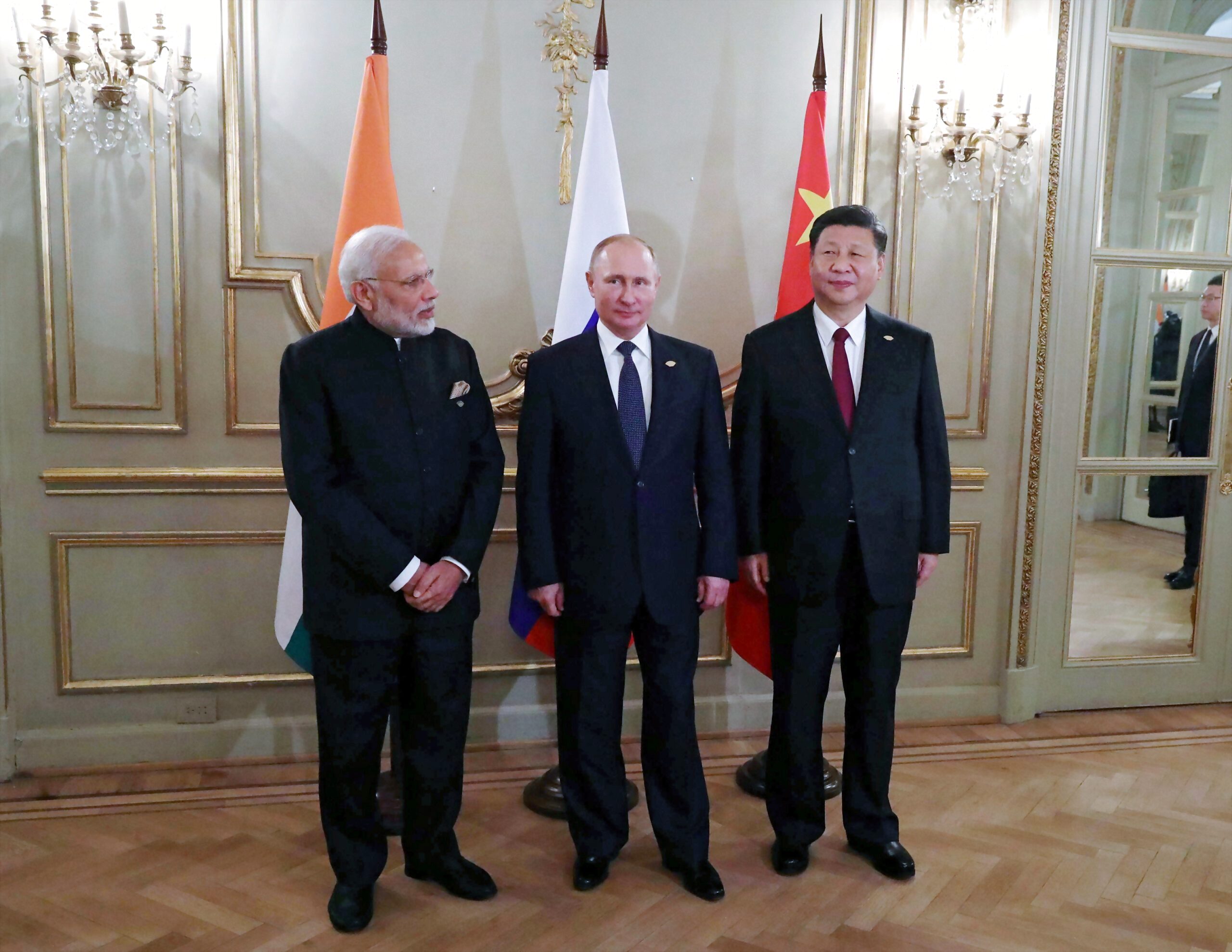
Moreover, despite the growing closeness since the Ukraine conflict, Russia has shown its closeness to India. Whether it be by choosing to ignore the boycott of the G20 tourism summit in Kashmir with a high profile delegation, a boycott of which China was a part of, or when Russia reiterated, in the midst of a high level commander-level talks, that it will continue to provide India with the S400 air defence system as scheduled. Both these events caused major outrage in China and people started questioning the sanctity of the China-Russia “limitless friendship” and “back-to-back strategic coordination. There were some in China who also acknowledged, begrudgingly, that the three-way ties of India-Russia-China is more favourable towards India-Russia relations.
The Personal Rapport
However, the most compelling factor which has potentially kept the relationship going has been the personal rapport of Modi and Putin. Both the leaders have praised each other, their policies and despite some differences on geopolitical issues and Russia’s Ukraine invasion the bonhomie remains.
Modi and Putin have met several times formally and informally alongside major organisational setups. The first informal meet between the two was at Sochi in 2018. This meeting added a new aspect to the Special and Privileged Relationship between India and Russia and was only possible due to the personal relationship of the two leaders. The timing of this informal meeting was highly significant, taking place just before key international events like the Shangri-La Dialogue, SCO Summit, and the BRICS Summit. It followed the imposition of CAATSA sanctions on Russia and America’s withdrawal from the Iran nuclear deal, adding further weight to the discussions. While no formal agreements were reached, the speeches by both leaders and official statements from both sides emphasised the importance of this informal gathering, highlighting the need for dialogue and understanding in a rapidly changing global landscape.
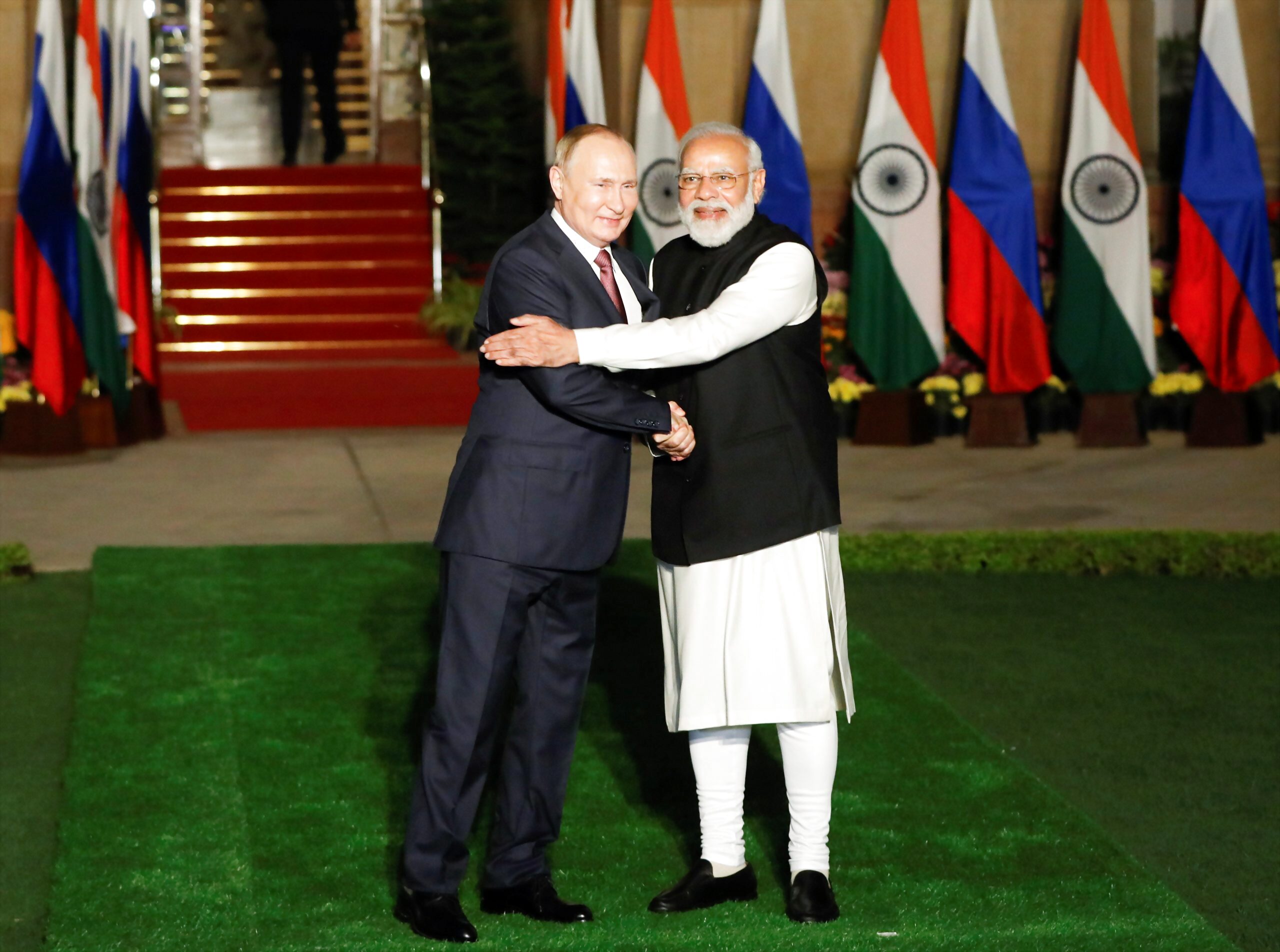
More recently, Putin has praised Modi on his leadership, and his willingness to take tough stances and decisions, to ensure India’s national interests are pursued. Putin had said, “(I) cannot imagine that Modi could be frightened, intimidated or forced to take any actions, steps, decisions that would be at variance with the national interests of India and the Indian people.” The statement not only reinforced India’s independent stance on the world stage, but this was also an attempt to shore-up India’s support at a time when Russia finds itself isolated.
Certainly, the partnership is under duress due to multiple geopolitical factors, however this in no way reflects a breakdown in relations. Modi’s upcoming visit is expected to rest the ongoing commentary around a perceived downhill trajectory of the relations and bolster the newfound economic aspect in bilateral trade and reinvigorate the traditional security and defence relationship with Russia.
Views expressed in the above piece are personal and solely those of the author. They do not necessarily reflect News18’s views.


















Comments
0 comment